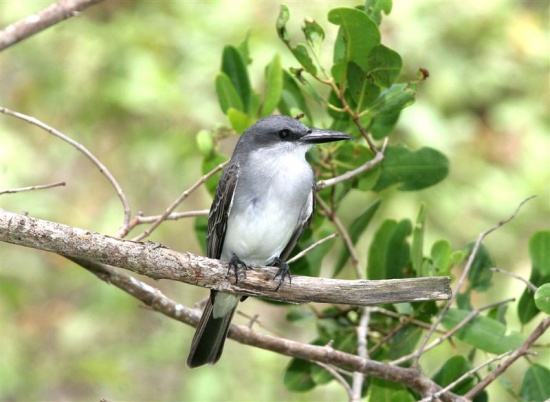- Tyrannus dominicensis
Identification
Underparts of the Gray Kingbird are light grey to almost white, darkest on the upper breast. Upperside is medium gray with darker tail, primaries, and top of head. Tail shows a slight fork at the very end. The side of the head shows a more or less strongly contrasting black "bandits mask". The bill is strong, black, and relatively wide at the base. In the crown is an area with a concealed yellow-orange patch, which very rarely is visible. Field guides sometimes mention that there should be no yellow in the plumage apart from the concealed crown patch. That seems to be wrong, the undertail coverts, and less often the entire underside may look light yellowish to the human eye as well as to the camera; study of museum bird indicate that this feature is found in some juvenile birds.
Distribution
Nominate subspecies is found from coastal Florida to northern South America and Trinidad including part of the Caribbean, while subspecies vorax is found in the Lesser Antilles. Both subspecies are at least partial migrants in part of their ranges. Rare to casual vagrant west along coastal to Texas and north along the Atlantic coast to the maritime provinces.
Taxonomy
Polytypic. Consists of two subspecies.
Habitat
Gardens, agricultural areas with some trees and other semiopen areas.
Behavior
The Gray Kingbird can be very aggressive, with reported attacks on passing Magnificent Frigatebirds and Brown Pelicans, birds 4-5 times longer than themselves and even more disproportionate in weight. At least in Dominica, no other birds dare to flycatch from the top of trees and bushes, they try to stay concealed to avoid confrontations.
References
- Birdforum thread discussing Grey Kingbird




